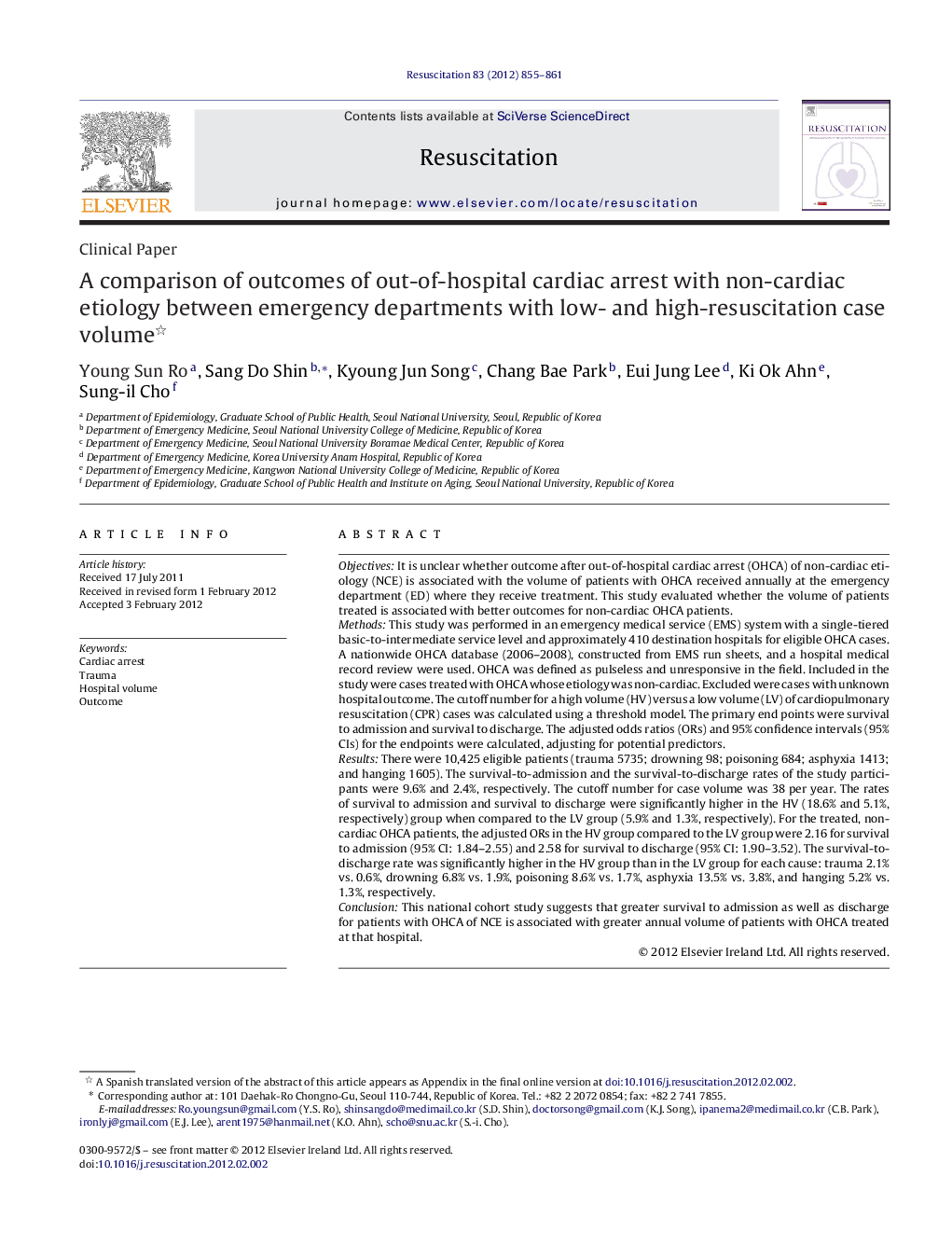| کد مقاله | کد نشریه | سال انتشار | مقاله انگلیسی | نسخه تمام متن |
|---|---|---|---|---|
| 3008844 | 1181467 | 2012 | 7 صفحه PDF | دانلود رایگان |

ObjectivesIt is unclear whether outcome after out-of-hospital cardiac arrest (OHCA) of non-cardiac etiology (NCE) is associated with the volume of patients with OHCA received annually at the emergency department (ED) where they receive treatment. This study evaluated whether the volume of patients treated is associated with better outcomes for non-cardiac OHCA patients.MethodsThis study was performed in an emergency medical service (EMS) system with a single-tiered basic-to-intermediate service level and approximately 410 destination hospitals for eligible OHCA cases. A nationwide OHCA database (2006–2008), constructed from EMS run sheets, and a hospital medical record review were used. OHCA was defined as pulseless and unresponsive in the field. Included in the study were cases treated with OHCA whose etiology was non-cardiac. Excluded were cases with unknown hospital outcome. The cutoff number for a high volume (HV) versus a low volume (LV) of cardiopulmonary resuscitation (CPR) cases was calculated using a threshold model. The primary end points were survival to admission and survival to discharge. The adjusted odds ratios (ORs) and 95% confidence intervals (95% CIs) for the endpoints were calculated, adjusting for potential predictors.ResultsThere were 10,425 eligible patients (trauma 5735; drowning 98; poisoning 684; asphyxia 1413; and hanging 1605). The survival-to-admission and the survival-to-discharge rates of the study participants were 9.6% and 2.4%, respectively. The cutoff number for case volume was 38 per year. The rates of survival to admission and survival to discharge were significantly higher in the HV (18.6% and 5.1%, respectively) group when compared to the LV group (5.9% and 1.3%, respectively). For the treated, non-cardiac OHCA patients, the adjusted ORs in the HV group compared to the LV group were 2.16 for survival to admission (95% CI: 1.84–2.55) and 2.58 for survival to discharge (95% CI: 1.90–3.52). The survival-to-discharge rate was significantly higher in the HV group than in the LV group for each cause: trauma 2.1% vs. 0.6%, drowning 6.8% vs. 1.9%, poisoning 8.6% vs. 1.7%, asphyxia 13.5% vs. 3.8%, and hanging 5.2% vs. 1.3%, respectively.ConclusionThis national cohort study suggests that greater survival to admission as well as discharge for patients with OHCA of NCE is associated with greater annual volume of patients with OHCA treated at that hospital.
Journal: Resuscitation - Volume 83, Issue 7, July 2012, Pages 855–861